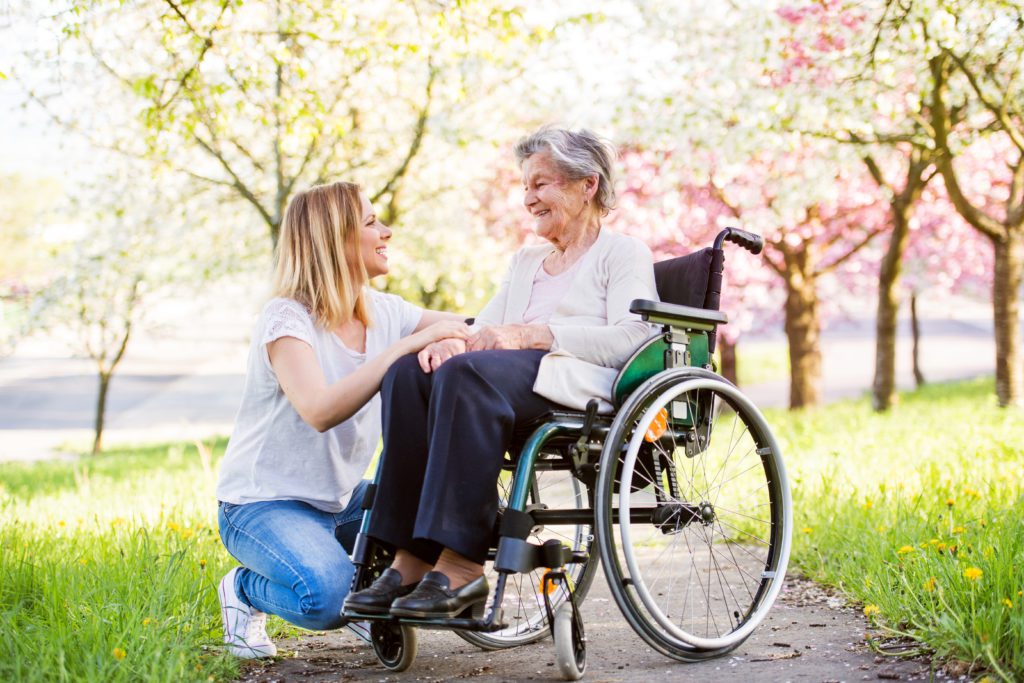How to engage and communicate with someone who has dementia

Here are some simple rules to help you on your joint journey with your loved one. The main thing to remember is:
GO TO THEIR WORLD!
If you do nothing else, but follow this one rule, everything else will fall into place!
Remember they are no longer ‘in the here and now’. Their reality could be in 1920, 1940 or 1970, or anywhere in the past. Trying to convince them otherwise will be detrimental to you and to them. Behaviors can be controlled if you follow this one rule.
Behavioral problems: Situations affecting behavior may include:
A. Moving to an unfamiliar location (assisted living, board & care, a new family home)
B. Changes in the environment or caregivers
C. Misperceived threats (paranoia hallucinations)
D. Being asked to bathe or change clothing
E. Fear and fatigue resulting from trying to make sense out of their increasingly confusing world.
Potential solutions to behaviors
A. Always keep your tone and body language friendly and positive
B. Make eye contact and stay at their eye level whenever possible
C. Try to remain flexible, patient and supportive.
D. Monitor personal comfort Check for pain, hunger, thirst, constipation, full bladder, fatigue, infections and skin irritation. Maintain a comfortable room temperature.
E. Avoid being confrontational (don’t contradict them) go to their world. Don’t argue about facts; instead, respond to the feeling behind what is being expressed. For example, if a person expresses a wish to visit their loved one who died years ago, don’t point out that the person is dead. Instead say, ‘’Your mother is a wonderful person, I would love to see her too. But we must plan it first, I will make a call for you.” At that moment you can redirect them by either placing something in their hand (something with texture) or asking them if they want ice cream.
F. Create a calm environment. Avoid noise, glare, or too much background distraction, including TV. Although, music can be relaxing and can provide this calm space.
G. Allow adequate rest between stimulating events
H. Simplify the environment, tasks and solutions.
I. Always try to redirect the persons attention.
J. When appropriate equip doors or outside gates, cabinets and drawers with safety locks.
Everyday engagement: Providing dignity and showing respect daily is the key to being a great care provider.
A. Respect their modesty. In some cases you have to respect your modesty.
B. Knock before entering room, announce yourself and approach them while talking. If they are hard of hearing, walk in front of them and speak to them slowly and clearly.
C. Close their door when assisting with personal care.
D. Only give two choices. This gives the feeling of ‘control or decision making’ to the senior, but also provides a structured environment, which you actually control.
E. Provide routine (but be flexible) i.e., shower time might need to change.
F. Encourage self-help before doing the task yourself. Never do it because they are slow with the task.
G. Don’t speak to loudly or in a tone of anger.
H. When you ask questions give them time to respond don’t rush the conversation.
I. Use open ended questions, there are no right or wrong answers.
J. Always use courtesy and concern when caring for your senior.
K. Give compliments and encouragement. But keep it simple, most senior with advanced dementia have an attention span of 3-5 minutes, and can only complete 5 of 12 steps of a task.
L. Treat them as if they know what is going on, i.e., don’t talk about them (in front of them) with someone else, you never know when they are having a ‘good’ moment and understand you.
Planning Activities or outings:
Focus on the individual: Person-Activity-Approach-Place
A. Activities should be appropriate to the person and reflect his or her interests.
B. Keep the person’s skills and abilities in mind. (hobbies and professional background should be considered) Relate activities to past work live or favorite things to do.
C. Pay special attention to what the person enjoys. Sometimes if can be as simple as reading a book to them or listening or dancing to some of the music from their era.
D. Consider their physical limitations.
E. Focus on enjoyment not achievement
F. Encourage involvement in daily life
G. Choose activities which encourage cognitive stimulation, but that don’t require many ‘tasks’.
H. Encourage self-expression, don’t criticize or correct during an activity.
Activities of daily living:
ADL’s are considered an individual’s fundamental, self-care task. They include the ability to:
A. Dress, B. Eat, C. Ambulate, D. Toilet, E. bathing grooming personal hygiene needs.
When a senior can no longer do these alone the caregiver will fill the gap either verbally directing them or physically helping them. Try to keep them as independent as long as possible.
For more information about location Alzheimer's related programs
and services or memory care options, contact us today.
Ready to find the perfect senior living community for your loved ones?
Your Partner in Making Informed Decisions on Geriatric Care in Greater Sacramento
